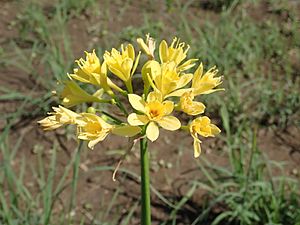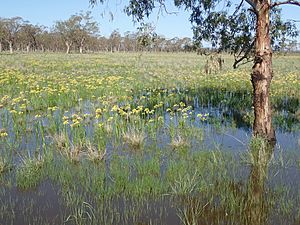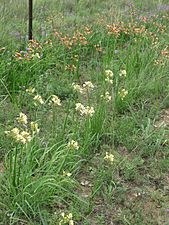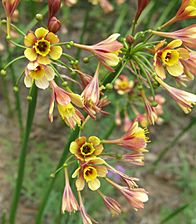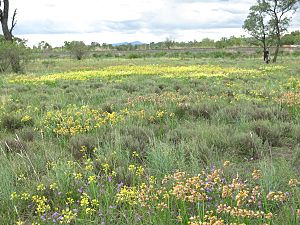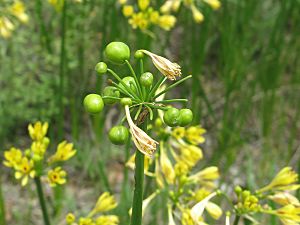Garland lily facts for kids
Quick facts for kids Garland lily |
|
|---|---|
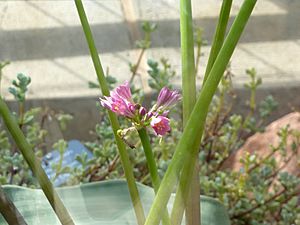 |
|
| Scientific classification | |
 |
|
| Occurrence data from AVH | |
| Synonyms | |
|
Calostemma lutea |
The Calostemma purpureum, also known as the garland lily, is a beautiful flowering plant. It lives for many years and grows naturally in parts of Australia. You can find it in South Australia, Victoria, and New South Wales.
Garland lilies can have flowers that are cream, yellow, pink, or purple. They are related to the common daffodil. These lilies used to grow in huge groups in grassy areas. The plain where the city of Adelaide now stands was once full of them. However, because of cities growing and animals grazing, the garland lily is now rare. You can only find small groups in parks on the edges of cities.
How the Garland Lily Grows
The leaves of the garland lily start to grow from its bulb during winter. These leaves then die off when spring arrives. The plant itself flowers during the summer, when there are no leaves.
The Calostemma purpureum bursts into flower in the middle of the hot Australian summer. This is a time when most other plants are not flowering. Its flowers are usually purple-pink. They grow in a cluster of 5 to 10 showy flowers, shaped like an umbel. These flowers appear on a stalk that is about 30 centimeters (about 12 inches) long.
Life Cycle of the Garland Lily
After the flowers bloom, they are replaced in autumn by groups of large, berry-like seeds. These seeds are quite special because they can sprout while they are still on the plant!
The seeds grow very easily. However, it might take three or four years before a new garland lily plant flowers for the very first time.
Image gallery
-
A large group of garland lilies near Gunnedah, NSW
See also
 In Spanish: Hedychium para niños
In Spanish: Hedychium para niños


